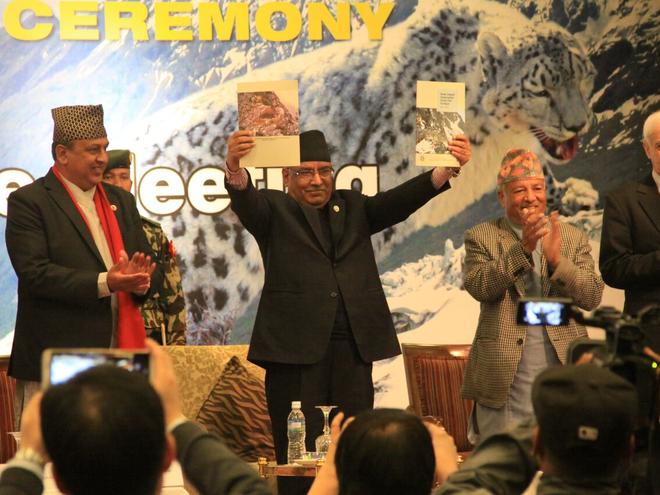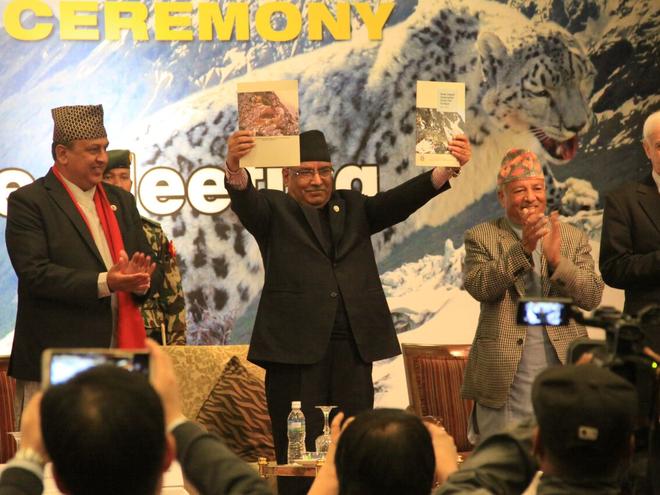Snow leopard range countries gear up for climate-smart conservation
Published by the World Wildlife Fund

Delegates from the 12 snow leopard range countries met in Kathmandu to strengthen their commitment to snow leopard conservation and chart a way forward to secure a future for this elusive and endangered cat.
With climate change threatening all of the Third Pole—the high mountains in Asia that are home to the snow leopard—the Global Snow Leopard and Ecosystem Protection Program (GSLEP) steering committee meeting focused on climate-smart conservation, poaching and trade, as well as snow leopard and high mountain research.
At the event, Ari Nathan, regional environment officer for USAID, recalled his recent meeting with George Schaller, who went out on a quest for the elusive snow leopard in Nepal’s mountains 40 years ago. Recently, as he retraced his steps in Nepal, he said he found the biggest difference in the mountains was the impact of climate change.
To combat this threat that is changing the face of mountains in the Third Pole, countries are working on climate-smart management plans for snow leopard landscapes, as part of the GSLEP goal of securing 23 such landscapes by 2020.
“Climate smart landscape management is a critical, and globally advanced methodology that is being rolled out in this important part of the world,” said Kate Newman, vice president for public sector initiatives at WWF. “It is encouraging that countries are on track to complete a number of plans ahead of schedule.”
Speaking at the opening of the GSLEP steering committee meeting, prime minister of the host country Nepal, Pushpa Kamal Dahal, emphasized that snow leopards are the guardians of the water towers and the indicator of the health of the mountain ecosystem. Saving their habitat is not just the responsibility of a handful of snow leopard range nations, but of everyone who needs clean air and water.
He also reiterated Nepal’s commitment to snow leopard conservation, pledging almost half a million dollars for the effort, and launching a new National Snow Leopard Conservation Action Plan for Nepal at the opening ceremony, which includes a budget of $3.15 million for implementation. The plan was prepared with financial and technical support of WWF Nepal.
Underscoring the urgency of transboundary snow leopard anti-poaching work, James Compton, senior director at TRAFFIC, the wildlife trade monitoring network, emphasized how, like snow leopards, poachers and traffickers also respect no borders. He presented the alarming findings of a recent TRAFFIC report that since 2008, a minimum of four snow leopards have been killed per week. But this number could be substantially higher since many killings in remote areas go undetected.
The report, An Ounce of Prevention: Snow leopard crime revisited, was produced with support from the USAID funded Conservation and Adaptation in Asia’s High Mountain Landscapes and Communities program. Through the program, WWF and USAID have also been supporting the GSLEP process.
The GSLEP steering committee meeting and landscape management planning workshops hosted by Nepal are both geared towards preparation for a Global Snow Leopard Summit of the twelve range nations, to be hosted by the Government of Kyrgyzstan on Sept. 7 and 8, 2017.
Read the full article at: http://feedproxy.google.com/~r/WWFStories/~3/g2i3hPEzFFk/snow-leopard-range-countries-gear-up-for-climate-smart-conservation



